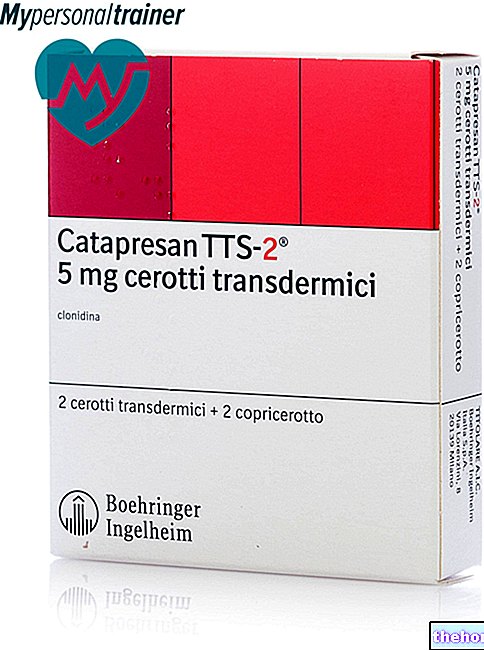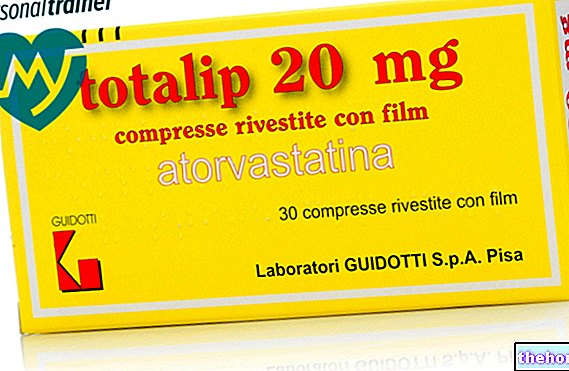Active ingredients: Acamprosate
CAMPRAL 333 mg gastro-resistant coated tablets
Why is Campral used? What is it for?
This medicine contains an active substance called calcium acamprosate, which works by reducing the effect of some neurotransmitters involved in alcohol addiction.
CAMPRAL is indicated to help the alcohol-dependent patient to maintain abstinence from alcohol, in association with psychological support (individual and / or group).
Contraindications When Campral should not be used
Do not take CAMPRAL if:
- you are allergic to the active substance or to any of the other ingredients of this medicine (listed in section 6);
- have kidney problems;
- is breastfeeding.
Precautions for use What you need to know before taking Campral
Talk to your doctor or pharmacist before taking CAMPRAL
Your liver function should be properly evaluated before starting CAMPRAL therapy.
Patients suffering from alcohol addiction often also suffer from depression or have suicidal thoughts.
For this reason, your doctor may ask you to have periodic check-ups, even during treatment with CAMPRAL. Children, adolescents and the elderly CAMPRAL is not suitable for patients under the age of 18 or over the age of 65.
Interactions Which drugs or foods may change the effect of Campral
Tell your doctor or pharmacist if you are taking, have recently taken or might take any other medicines.
CAMPRAL with food, drink and alcohol
Do not take CAMPRAL with other food (on a full stomach), as this may decrease the action of this medicine. Drinking alcohol while taking CAMPRAL does not affect your therapy. If you are taking CAMPRAL, you should still avoid drinking alcohol.
Warnings It is important to know that:
Pregnancy, breastfeeding and fertility
If you are pregnant, think you may be pregnant or are planning to have a baby, ask your doctor or pharmacist for advice before taking this medicine.
During pregnancy, your doctor will prescribe CAMPRAL only after a "careful assessment of the risks to you and to the fetus if you are unable to refrain from drinking alcohol, because this behavior can be risky for your baby's health.
If you are breast-feeding do not take CAMPRAL. If you are unable to refrain from drinking alcohol your doctor will decide whether to stop breastfeeding and start treatment with CAMPRAL, based on the benefits the drug may have for you.
Driving and using machines
CAMPRAL does not affect the ability to drive or use machines.
Dose, Method and Time of Administration How to use Campral: Posology
Always take this medicine exactly as your doctor has told you. If in doubt, consult your doctor or pharmacist.
If you weigh less than 60 kg, the recommended dose is 4 tablets per day (2 in the morning, 1 at noon and 1 in the evening).
If you weigh more than 60 kg, the recommended dose is 6 tablets per day (2 in the morning, 2 at noon and 2 in the evening).
Take the tablets preferably on an empty stomach.
The duration of treatment with CAMPRAL is one year.
Senior citizens
CAMPRAL should not be used if you are over 65 unless specifically instructed by your doctor.
Children and adolescents
CAMPRAL should not be used if you are under the age of 18, unless specifically instructed by your doctor.
If you forget to take CAMPRAL
Do not take a double dose to make up for a forgotten dose.
If you stop taking CAMPRAL
Do not stop treatment without consulting your doctor.
If you have any further questions on the use of this medicine, ask your doctor or pharmacist.
Overdose What to do if you have taken too much Campral
If you take more CAMPRAL than you should you may notice diarrhea, usually mild; warn your doctor, who will be able to assess the need for adequate therapy.
Side Effects What are the side effects of Campral
Like all medicines, this medicine can cause side effects, although not everybody gets them.
Stop taking CAMPRAL immediately and see your doctor if you notice an allergic reaction which occurs with: hives, swelling of the face, eyes, lips, swelling of the throat with difficulty in breathing (angioedema), sudden drop in blood pressure blood (anaphylactic reaction) This occurs very rarely.
Tell your doctor if you notice:
very common side effects (may affect more than 1 in 10 people):
- diarrhea;
common side effects (may affect up to 1 in 10 people):
- itching, rash characterized by redness and blisters (maculo-papular erythema);
- difficulty or absolute impossibility of the woman to reach orgasm (frigidity), inability of the man to perform the sexual act or to conceive (impotence);
- decreased sexual desire (libido);
- pain in the abdomen, nausea, vomiting, intestinal gas (flatulence);
uncommon side effects (may affect up to 1 in 100 people):
- increased sexual desire (libido);
unknown side effects (frequency cannot be estimated from the available data):
- rash characterized by blisters and blisters.
Reporting of side effects
If you get any side effects, talk to your doctor or pharmacist. This includes any possible side effects not listed in this leaflet. You can also report side effects directly via the national reporting system at “www.agenziafarmaco.gov.it/it/responsabili.” By reporting side effects you can help provide more information on the safety of this medicine.
Expiry and Retention
Keep this medicine out of the sight and reach of children.
No special storage precautions are required. Do not use this medicine after the expiry date which is stated on the package. The expiry date refers to the last day of that month.
Do not throw any medicines via wastewater or household waste. Ask your pharmacist how to throw away medicines you no longer use. This will help protect the environment.
Deadline "> Other information
What CAMPRAL contains
The active ingredient is: calcium acamprosate.
Each gastro-resistant coated tablet contains 333 mg of calcium acamprosate, corresponding to 299.7 mg of acamprosate and 33.3 mg of calcium.
The other ingredients are: crospovidone, microcrystalline cellulose, magnesium silicate, sodium starch glycolate, anhydrous colloidal silica, magnesium stearate, anionic copolymerized based on methacrylic acid and ethyl ester of acrylic acid, talc and propylene glycol.
Description of what CAMPRAL looks like and contents of the pack
CAMPRAL is available in a carton containing 84 tablets of 333 mg.
Source Package Leaflet: AIFA (Italian Medicines Agency). Content published in January 2016. The information present may not be up-to-date.
To have access to the most up-to-date version, it is advisable to access the AIFA (Italian Medicines Agency) website. Disclaimer and useful information.
01.0 NAME OF THE MEDICINAL PRODUCT -
CAMPRAL
02.0 QUALITATIVE AND QUANTITATIVE COMPOSITION -
Each gastro-resistant coated tablet contains :
Active principle:
calcium acamprosate 333 mg, equivalent to 299.7 mg of acamprosate.
Each gastro-resistant coated tablet contains 33.3 mg of calcium.
For the full list of excipients, see section 6.1.
03.0 PHARMACEUTICAL FORM -
Gastro-resistant coated tablets.
04.0 CLINICAL INFORMATION -
04.1 Therapeutic indications -
Acamprosate is indicated for the maintenance of abstinence in the alcohol-dependent patient. It must be associated with psychological support.
04.2 Posology and method of administration -
The dosage is 6 tablets per day divided into 3 doses (2 tablets in the morning, 2 at noon and 2 in the evening), for a person weighing more than 60 kg.
The dosage is 4 tablets per day divided into 3 doses (2 tablets in the morning, one at noon and one in the evening), for a subject weighing less than 60 kg.
The recommended treatment duration is one year.
04.3 Contraindications -
Campral is contraindicated in patients with hypersensitivity to acamprosate or to any of the excipients.
Acamprosate is contraindicated:
• In patients with renal impairment (serum creatinine> 120 micromol / l);
• In breastfeeding women (see section 4.6).
04.4 Special warnings and appropriate precautions for use -
- The safety and efficacy of Campral have not been established in patients under the age of 18 and over the age of 65. The use of Campral is therefore not recommended in these populations.
- Since the interrelation between alcohol dependence, depression and suicidality is well recognized and complex, it is recommended that alcohol-dependent patients, including those treated with acamprosate, be monitored for their symptoms.
- The safety and efficacy of Campral have not been established in patients with severe hepatic impairment (Child-Pugh C classification).
Abuse and addiction
Preclinical studies suggest that acamprosate has little or no abuse potential. There has been no evidence of dependence due to acamprosate in any clinical study, which demonstrates that acamprosate has no significant addictive potential.
04.5 Interactions with other medicinal products and other forms of interaction -
Concomitant use of acamprosate with disulfiram, oxazepam, tetrabamate or meprobamate revealed no change in the frequency of clinical and / or biological adverse reactions.
In clinical studies, acomprosate was safely administered in combination with antidepressants, anxiolytics, hypnotics and sedatives and non-opioid analgesics.
The concomitant intake of alcohol and acamprosate does not modify the pharmacokinetics of acamprosate nor that of alcohol.
The administration of acamprosate with food decreases the bioavailability of the drug compared to its administration in the fasted state.
04.6 Pregnancy and breastfeeding -
Pregnancy
There are no adequate data on the use of Campral in pregnant women. Animal studies did not show any fetotoxicity or any teratogenic effects. During pregnancy, acamprosate should therefore be used only after a careful assessment of the risk / benefit ratio if the patient is unable to abstain from drinking alcohol without being treated with Campral and therefore there is a risk of foetotoxicity or teratogenicity due to alcohol. .
Feeding time
Campral is known to be excreted in the milk of lactating animals. It is not known whether acamprosate is excreted in human milk. There are no adequate data on the use of acamprosate in infants. Acamprosate should therefore not be used in breastfeeding women.
If a breastfeeding woman cannot abstain from drinking alcohol without being treated with acamprosate, a decision must be made whether to discontinue breastfeeding or to discontinue Campral, taking into account the importance of the medicine to the woman.
Fertility
No effects on fertility were observed in animal studies. It is not known whether acamprosate affects human fertility or not.
04.7 Effects on ability to drive and use machines -
Campral does not affect the ability to drive or use machines.
04.8 Undesirable effects -
According to information gathered during clinical trials and post-marketing spontaneous reports, the following adverse events may occur during treatment with Campral.
The following definitions apply to the frequency terminology used below: Very common ≥1 / 10
Common ≥1 / 100,
Uncommon ≥1 / 1,000,
Rare ≥1 / 10,000,
Very rare
Not known (frequency cannot be estimated from the available data)
Gastrointestinal disorders:
Very common: diarrhea
Common: abdominal pain, nausea, vomiting, flatulence
Skin and subcutaneous tissue disorders:
Common: pruritus, maculo-papular erythema
Not known: vesiculo-bullous eruptions
Disorders of the immune system:
Very rare: hypersensitivity reactions including urticaria, angioedema or anaphylactic reactions
Diseases of the reproductive system and breast:
Common: frigidity or impotence
Psychiatric disorders:
Common: decreased libido
Uncommon: increased libido
04.9 Overdose -
Acute overdose is usually mild. In the reported cases, the only symptom that can reasonably be related to overdose is diarrhea. No case of hypercalcaemia has ever been reported. Treatment of overdose is symptomatic.
05.0 PHARMACOLOGICAL PROPERTIES -
05.1 "Pharmacodynamic properties -
Pharmacotherapeutic group: treatment of chronic alcoholism.
ATC code: N07BB03.
Alcoholic detox
Acamprosate (calcium acetylomotaurinate) has a structure similar to that of neurotransmitter amino acids such as taurine or gamma-amino butyric acid (GABA). It involves an "acetylation which allows it to pass through the blood brain barrier.
Acamprosate has been shown to stimulate GABAergic inhibitory neuromediation and antagonize the action of excitatory amino acids, in particular that of glutamate.
Studies carried out in animals have established that acamprosate has a specific effect on alcohol dependence: in fact it decreases the voluntary intake of alcohol in alcohol-dependent mice.
05.2 "Pharmacokinetic properties -
Absorption of acamprosate from the gastrointestinal tract is modest. It is slow and constant, with significant inter-individual variability.
Feeding decreases oral absorption of acamprosate. Concentrations reach equilibrium after seven days of repeated administration.
Acamprosate does not bind to plasma proteins.
The urinary elimination of acamprosate in unchanged form represents 50%. There is a linear relationship between creatinine clearance and total apparent plasma clearance, renal clearance and plasma half-life of acamprosate. The pharmacokinetic parameters of acamprosate are not modified by an alteration of hepatic function.
05.3 Preclinical safety data -
In preclinical studies the signs of toxicity are related to an excessive absorption of calcium and not to acetylomotaurine. Alterations of phosphocalcic metabolism such as diarrhea, calcification of soft tissues, kidney lesions and cardiac lesions have been observed. In the animal, acamprosate. it has no mutagenic or carcinogenic potential, no teratogenic effect or any undesirable effect on the reproductive functions of the male or female.
06.0 PHARMACEUTICAL INFORMATION -
06.1 Excipients -
Crospovidone
Microcrystalline cellulose
Magnesium silicate
Sodium carboxymethyl starch
Anhydrous colloidal silica
Magnesium stearate
Tablet coating:
Anionic based copolymerized
of methacrylic acid and of ethyl ester of acrylic acid
Talc
Propylene glycol
06.2 Incompatibility "-
Not relevant.
06.3 Period of validity "-
3 years.
06.4 Special precautions for storage -
No particular education.
06.5 Nature of the immediate packaging and contents of the package -
Thermoformed blisters in PVC / PVDC / aluminum of 12 or 20 tablets. The thermoformed blisters are packed in boxes of 60, 84 or 200 tablets.
Polypropylene bottle of 125 ml capacity, closed with a polypropylene cap with a child resistant closure containing 180 tablets.
Not all pack sizes may be marketed.
06.6 Instructions for use and handling -
No special instructions.
07.0 HOLDER OF THE "MARKETING AUTHORIZATION" -
Bruno Farmaceutici S.p.A.
Via delle Ande 15
00144 Rome
Italy
08.0 MARKETING AUTHORIZATION NUMBER -
CAMPRAL 333 mg gastro-resistant coated tablets, 84 tablets AIC n ° 034208013
09.0 DATE OF FIRST AUTHORIZATION OR RENEWAL OF THE AUTHORIZATION -
Date of first authorization: 12 April 1999 / Date of most recent renewal: 26 May 2009
10.0 DATE OF REVISION OF THE TEXT -
March 2013




























